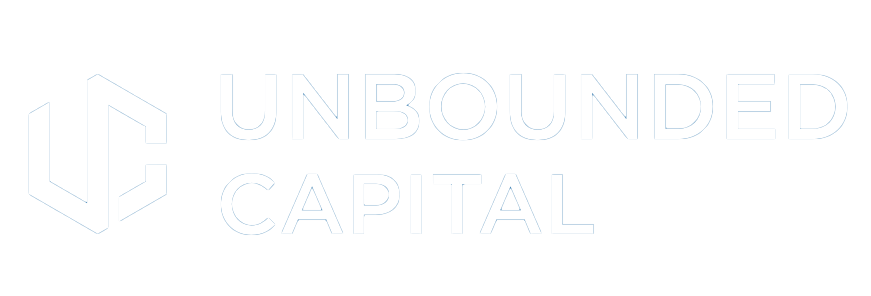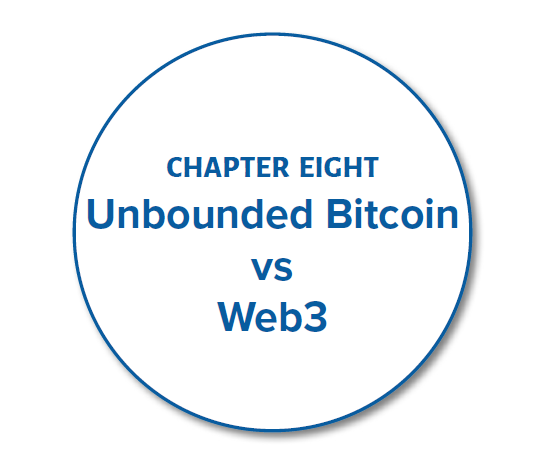At a high level, Multicoin Capital’s vision of “web3” has similarities with Unbounded Capital’s vision of the internet built on Bitcoin (BSV) at scale. In their blog post “Mega Crypto Theses,” Multicoin Capital describes their forecasted transition from web2 to web3 as being,
“about empowering consumers to control their own data, as opposed to the status quo in which tech giants (...) hoard consumer data. As this paradigm shifts, incumbents will lose their primary competitive advantage—their data monopolies and associated network effects—creating massive opportunities for new value creation.”
At Unbounded Capital we mostly agree with this statement and have written similarly about why we anticipate a shift towards a user-centric data ownership paradigm on BSV and what that might mean for the existing big data tech giants and their business models. The key differences between Multicoin Capital’s vision and Unbounded Capital’s vision are the specifics on where this data will move, how it will be organized, how it will interoperate, and why the relevant parties will be incentivized to undertake this transition.
HOW TO BUILD Web3
As we illustrated in chapter 1, we envision Bitcoin becoming the world’s single scalable public immutable database. The value of using this database compounds as more data is added and more applications and users leverage it. This is not a property of Multicoin’s web3, which is a modular conglomeration of dozens of disparate decentralized protocols and networks. In fact, some of these networks’ sole purpose is to allow the other networks to communicate with each other. In their blog post, The Web3 Stack, Multicoin provides a visual representation of how they imagine this landscape of networks looking. The diagram and blog post suggests a complex network of interconnected protocols with each serving one of more than a dozen specific purposes as opposed to a scaled version of bitcoin serving as a general purpose protocol.
The complexity of such a landscape would make it obviously inferior to a single network with equivalent functionality. The wisdom of Occam’s razor, originally written as “Entities should not be multiplied without necessity,” encapsulates why. The reason that Multicoin Capital sees value in this vision of web3 is because of the last two words of Occam’s razor, “without necessity.” Because Multicoin Capital is confused about Bit- coin’s ability to scale and the value of decentralization, they think a disparate web3 is necessary in order to achieve our shared goals. If they understood Bitcoin could serve all the same functions on one network, we think they would likely prefer that approach. In their blog post The World Computer Should be Logically Centralized, Mulitcoin writes,
While there are many types of scaling solutions being worked on, each of them create idiosyncratic forms of complexity for application developers, users, and the ecosystem as a whole. The last of these forms of complexity - what I call “creating ecosystem baggage” - is particularly challenging to deal with. For example, wallets need to know where user assets are across many chains and state channels; users need watchtowers; liquidity providers need to provide liquidity; liquidity pools are broken; latency is introduced in all kinds of weird places; etc.
Or said another way: all of these heterogeneous scaling solutions break the elegance and simplicity of a single logically centralized system (but architecturally and politically decentralized) that is bespoke, not uniform, and logically fragmented.
This analysis is spot on until the parenthetical clause in the last sentence. Because these forms of decentralization are not essential parts of Bitcoin’s security or value proposition they can be disregarded. Combining this sentiment with the reality that Bitcoin is unbounded in scale when left unencumbered by tinkering developers, it appears as though Multicoin is poised to appreciate the full potential of Bitcoin.
HOW TO TRANSITION TO Web3: DATA STORAGE
For the sake of argument let’s assume that Multicoin’s web3 vision has been realized. How and why would a business currently using the web2 data storage transition to web3? Recall our analysis of the lack of traction for today’s DApps as outlined in chapter 2. The demand for decentralized internet applications doesn’t appear to be strong. If users are as happy with their web2 applications as their current rate of usage suggests, will they abandon them for web3 clones simply because they are decentralized? If not, can we assume that DApp proliferation will be the result of functionality they uniquely offer?
For Unbounded Capital, our answer for how the current internet transitions to the BSV enabled internet is more clear: economic incentives. The efficiency improvements for both application developers and users will incentivize a transition to BSV. This incentive only increases as information is added. Today this process is beginning with BSV enthusiasts and early adopters launching applications as proofs of concept. As the success of proofs of concept attracts larger enterprise level companies like EHR Data, an electronic health records company currently building a product leveraging BSV, more businesses will understand the efficiency gains that are possible and will leverage it out of necessity to remain competitive. Many businesses will also be interested in Bitcoin’s ability to provide alternatives to the existing online business models like we described in chapter 1. Similarly, proofs of concept like Twetch, a social network leveraging direct micropayments for microservices, will pave the way, eventually catching the eye of legacy services as they prove this model’s viability and benefits. Because of the vast landscape of competing protocols vying for prominence in Multicoin’s vision of web3, there is no similar solution which is standardized across platforms to enable micropayments.
HOW TO TRANSITION TO Web3: SMART CONTRACTING
Beyond Bitcoin’s scalability, Multicoin Capital also misunderstands the versatility of Bit- coin’s scripting language. In their blog post “Models for Scaling Trustless Computation,” Multicoin Capital describes Bitcoin as “just a trustless database.” This requires elaboration and nuance. The initial release of Bitcoin version O.1 included a robust scripting language that enabled a full range of programmability. The Opcodes that comprised this language were removed by developers in control of the node software because of the aforementioned concerns over decentralization. Today, as a result of this neutering, only a handful of Opcodes still function in BTC and transaction customizability has been reduced to a limited set of “standard transactions.” The removal of Bitcoins scripting language in addition to the BTC developer imposition of a ~ 1-megabyte block size limit have culminated in some truth in Multicoin Capital’s claim about BTC being “just a database.”
While it is somewhat true of BTC, it is not true of BSV. BSV (which, in Samani’s defense, did not exist as an independent blockchain at the time of the blog’s writing[ has restored Bitcoin’s scripting language and removed all developer-imposed restrictions on block size. As a result, BSV entrepreneurs and developers are once again allowed to use Bitcoin as more than “just a database.” In the same way Multicoin Capital observed developers leaving BTC for the “greener pastures” of Ethereum, today’s developers are making the same journey from Ethereum to BSV. While there have been several large scale projects that have fled Ethereum for BSV like gaming/E-Sports platform Kronoverse, BSV is noteworthy in that (as far as we know, please email us examples if we are wrong[ not a single developer has left its ecosystem in favor of any of its blockchain competitors.
Successful investors like WarrenBuffet, CharlieMunger, and Mark Cuban have referred to diversification as a“hedge against ignorance.”At Unbounded Capital, we understand Multicoin’s investment in an array of competing protocols at various layers of their envisioned web3 stack as doing exactly this. Once one understands that Bitcoin can scale to offer a superior version of web3 in one protocol, there is no need to be diversified amongst inferior candidate protocols which hope to be components of a less viable network. We imagine the difference between the bet on Bitcoin and the diversified bet on component protocols of web3 as being analogous to a dotcom investor focusing exclusively on businesses leveraging the public internet and ignoring any potentially exciting private intranets. In both instances, the incentive is for data to coalesce around one network. The only plausible candidate for this today is BSV. Until another credible candidate emerges, BSV will remain the sole focus of our investing.


